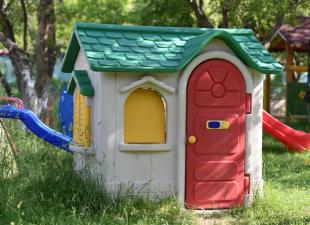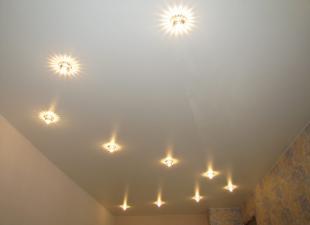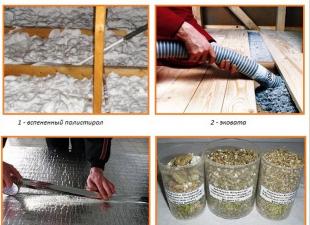Discreet, efficient, comfortable heating. A very attractive combination of characteristics. A warm floor immediately comes to mind. And rightly so. But this is not the only heating method that meets these characteristics. There is also a warm plinth. The system is easier to install, most of it is available for maintenance at any time. So the heating plinth should also be considered as an option for invisible heating.
Warm skirting system: what is it
Skirting boards or baseboard heating are not new in the field of heating. The idea was proposed at the beginning of the last century, but due to the complexity of implementation and the high price, it was almost forgotten. With the development of technology, the complexity has become lower, but the price is still high. This is, in the main, and holds back potential users.
The main difference between this system is the non-standard form of heating devices and their unusual location. Heaters are long and low, located around the perimeter of the room at floor level. The heaters are covered with a long decorative strip that looks very much like a skirting board. When installing, replace the usual skirting board. That is why such a system is very often called "warm skirting board". This system is very good for panoramic glazing - it can be no higher than the frames, so it is completely invisible. She is no worse in ordinary rooms - she is not visible at all.
Types of warm skirting boards
There are two types of warm skirting boards: electric and water. The electric warm skirting board differs in that each heating device is independent and can work separately. They can be installed in case of a lack of power of the main heating - as an additional one, in case of cold weather. The installation is simple, but it works efficiently, is invisible, does not dry the air too much.

There is a warm water baseboard. This is one of the subspecies of water heating, that is, all heating devices are connected into one system. It can be either the main type (only skirting heaters) or an additional type of heating (together with or with radiators).
Heating plinth device
In any case, a warm plinth looks like this: these are two copper pipes, which are at a distance of 7-15 cm from one another.To increase heat transfer, vertical plates made of aluminum, brass are put on the tubes (they cost a little less, but the heat transfer is slightly lower) or copper (more expensive and "warmer" option). The finned tubes are closed on top with decorative extruded aluminum covers. Aluminum was not chosen by chance - it transfers heat well. So the heated lid itself emits heat.
There are holes at the top and bottom of the cover for air movement. Cold is sucked in through the lower ones, heated through the upper ones. So it turns out heating comes from three sources:

Such a triple heat source contributes to the fact that the room heats up quickly, and the location of the heating elements around the perimeter contributes to uniform heating of the air throughout the entire volume.
Advantages and disadvantages of baseboard heating
What is the difference between heating using a warm skirting board? Warm air is drawn from the heating element upwards along the wall, warming up the wall. As you move up, the air gradually cools down, then descends, but not along the wall, but in the center of the room.
The result is that the warmest air is at the bottom of the room. The warmest object - apart from heaters - is the walls. Also warmer air is located at the floor. Rising up, it cools down and at head level it is slightly colder. The difference is small 1-2 degrees, but it is this temperature distribution that is better for a person's well-being.

Even distribution of heat over the entire area and volume is one of the most important advantages
Heating with a warm skirting board turns out to be inertial. It will not be possible to unambiguously attribute this property to advantages or disadvantages. There are both positive and negative aspects. Minus: until the walls warm up, the room is cool. Therefore, such a system is only good for permanent residences and is completely unsuitable for summer cottages. The positive thing is that when heated, the walls work as a large stabilizer - they maintain the temperature at the same level, giving off the accumulated heat if necessary. Such a large heat accumulator will help to hold out for some time even if the heating is turned off.
The advantages of a heating system with heating skirting boards include their efficiency. After the walls heat up, the boiler consumes a minimum of fuel - only to maintain the temperature. And such modes are usually more economical. But this applies to any inertial heating system, so this cannot be considered a special advantage of a warm skirting board.

Warm skirting board assembly is a little closer
There are plinth heating and undeniable advantages. The first is one of the few systems that provides uniform heating. Even the corners are always warm. The second is the most inconspicuous system that easily fits into any interior. With all this, heating devices are easily accessible, the system can be repaired at any time.
It has a warm plinth and a clear drawback - a high price. This is due to the fact that copper and aluminum are used to increase heat transfer, and they cost a lot.
Types of heating skirting boards
The baseboard heating system can be of two types: with electric and water heaters. At the installation stage, a system with warm water skirting boards is more complicated (a collector or beam connection is required), but during operation it is more economical. An electric warm skirting board is mounted quickly - you just need to fix the heaters to the wall, immediately after installation it is ready for use. But heating costs, like any electric heating, are high.

One of the most inconspicuous heating systems is a warm (heating) plinth
Heating device with hot water baseboard
The water baseboard heating system differs only in the non-standard form of heating devices. The key components do not differ from the standard ones: you need a hot water boiler, a manifold assembly and a pipe system with which a warm plinth is connected.

There is also a combined warm skirting board - with an electric heating element and pipes for the coolant
Please note: the optimal operating mode of the system is low-temperature. On the flow 40-50 ° C, on the return about 5 ° C lower. Therefore, it is necessary to select a boiler or build a system based on this. If the boiler is gas, the best choice is condensing. When installing any other, the system requires a heat accumulator and / or a mixing unit to reduce and stabilize the temperature.
Connection method
There are some peculiarities in the choice of the connection method. Serial connection of all baseboard heaters in the room is ineffective: until the coolant reaches the last in the heater branch, it will cool down a lot and they will remain cold almost all the time.

For a water heating plinth, a beam system is used: the devices are connected one at a time or in pairs. To do this, a manifold unit is built into the system, to which pipes are connected that go to heating devices. The disadvantage of such a system is the high consumption of pipes. After all, two pipes go to each device (or a small group) - for supply and return. The pipe consumption is much higher, but the heat distribution is more even and the system itself is more reliable. Why is it more reliable? If pipes or radiators are damaged in one group, all the others work normally.
Installation features
When installing a water baseboard heating, pipes are usually hidden in the floor. Laying them along the walls will not work, since the place is occupied by heating devices. That is, installation of warm water skirting boards is possible only at the stage of repair - you will have to raise the floors.

Special polymer pipes are recommended to be laid in a screed - they are not subject to corrosion and have low heat transfer, that is, heat losses during transportation of the coolant will be small. But since the availability of these systems for repair is not great, it is necessary to take high-quality goods from well-known manufacturers, and this is not cheap.
Electric warm skirting board
An electric warm plinth externally differs from a water one only in the presence of terminals for connecting power. The rest is the same. These are two tubes with perpendicularly fixed aluminum / brass / copper plates. In the lower tube there is a heating element - heating element, in the upper one they lay wires for connection.

It is much easier to install and connect an electric warm skirting board. You just need to fix it, stretch the wires and connect them to the terminals. To maintain the set temperature, a thermostat is built into the system, which turns on and off the heaters. The use of thermostats is desirable, as it optimizes operation - it saves electricity.
Installation is really simple, but it is necessary to connect an electric warm plinth to a dedicated line with a properly selected rating of the circuit breaker and copper single-core wires of the appropriate section. So, in this case, repairs are required - it is customary to lay the wiring in the wall, and for this it is necessary to do it, that is, to break the walls.
Installation of a hot water baseboard system
The installation of an electric warm skirting board is very simple: we fix it on the wall. That's it, the system is ready for use. It remains to plug in the sockets. The main thing is to be correctly calculated, to stand. This is the main problem when using an electric warm skirting board. The water one is much more difficult to mount. Everything must be collected into a single system, and this is not easy.

Calculation of baseboard heating
A complete heat engineering calculation of heating is a long and complicated business. The size and geometry of the room, the material of the walls, floor, ceiling are taken into account, the degree of insulation of all structural elements, including windows and doors, is taken into account. In general, the calculation is not easy at all. Therefore, most often they take the average figure, which is derived from the analysis of many calculations.
It is believed that to heat one square meter of the area of a room with an average insulation, 100 W of thermal energy is needed. That is, to calculate the power of a warm plinth, you need to multiply the area of the room by 100. Get the required figure. This is exactly how much (or better, about 20-25% more) that all the elements of a warm plinth should add up to.

For example, the area of a room is 18 square meters. It will need 1800 watts to heat it. Next, we look at how much heat is emitted by one meter of heating. The water heating plinth can work in different modes, depending on the mode, it emits a different amount of heat. The table above shows data for one of the systems. For example, let's take the heat dissipation of one meter of a warm plinth from this table (other manufacturers may have significant differences).
For example, the system will operate with a supply temperature of 50 ° C. Then one running meter produces 132 watts of heat. To heat this room, you will need 1800/132 = 13.6 m of warm plinth. When ordering, it is better to add 20-25% stock. This margin is necessary so that the system does not work all the time at the limit. This time. And also in case of abnormal cold weather. These are two. So, we take 17 meters with a margin.
Once again, we draw your attention: this is the average data for some average house. And even the height of the ceilings is not taken into account here. She again took the average - 2.5 meters. If your insulation is better, you will need less heat, if worse than "average" - more. In general, this method gives only rough estimates.
How to proceed
The first thing to do is to draw a plan on which to designate the length of each heater, the length of the connecting pipes. After all, the length of a warm plinth is not always equal to the perimeter of the room. In this case, the sections of the heating devices are interconnected with copper or polymer pipes. It is undesirable to use steel, as they chemically interact with copper (it is gradually destroyed).
Preparation for editing takes place long before its actual start. At the very beginning of the repair, even before the floor is leveled, pipes stretch from the boiler or manifold unit to the connection point of the warm plinth. The pipes are laid, tested for integrity, filled with a screed in a filled state under pressure (working pressure in a private house is 2-3 atm, in a multi-storey house it is necessary to find out in the housing office). Then all the repair work is carried out, and only after finishing the walls and floor, the installation of a warm plinth begins. Here is its order:

Actually, the installation of warm skirting boards is not too difficult. But the tightness of the joints is important and special attention must be paid to this.
 parlini.ru Repair of an apartment, a summer residence and a house.
parlini.ru Repair of an apartment, a summer residence and a house.


